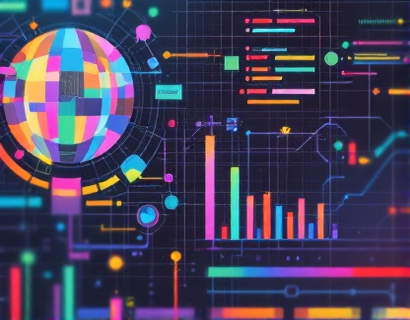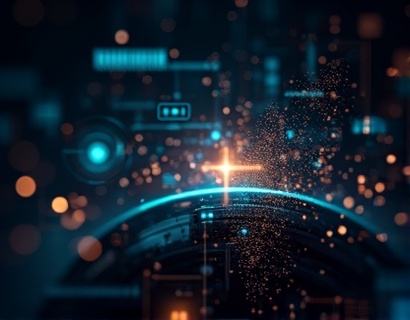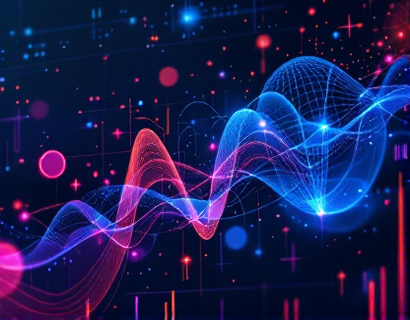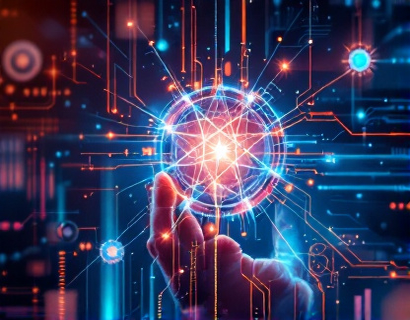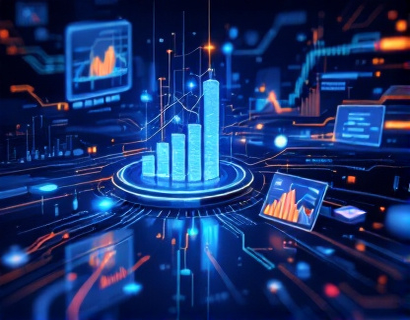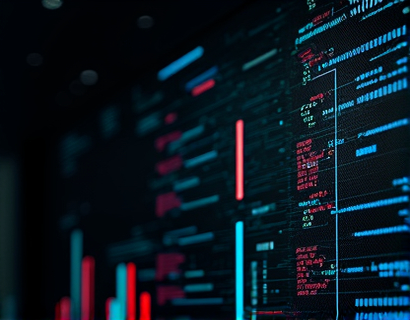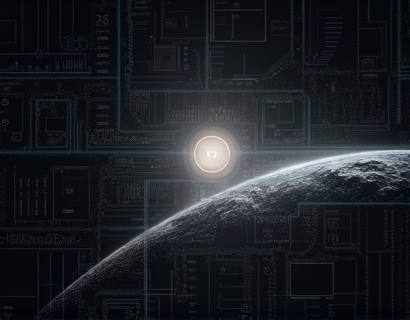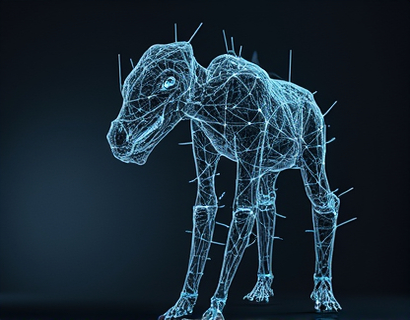Revolutionizing Digital Transformation: The Synergy of AI and Crypto
The intersection of artificial intelligence and cryptocurrency is ushering in a new era of digital transformation, one that promises to redefine how we interact with technology and each other. This convergence is not just a technological advancement but a paradigm shift that is reshaping the very fabric of digital services and applications. As we delve into this topic, it's essential to understand the fundamental components that drive this revolution: blockchain technology and machine learning.
Blockchain, the underlying technology behind cryptocurrencies, is more than just a ledger for digital transactions. It is a decentralized, transparent, and secure system that ensures data integrity and trust without the need for intermediaries. This technology has the potential to disrupt various industries by providing a robust framework for secure and efficient data management. On the other hand, machine learning, a subset of artificial intelligence, enables systems to learn from data, identify patterns, and make decisions with minimal human intervention. When combined, these technologies create a powerful synergy that can drive innovation and enhance user experiences.
Blockchain: The Backbone of Trust and Security
At its core, blockchain is a distributed ledger technology that records transactions across multiple computers in such a way that the registered transactions cannot be altered retroactively. This immutability is achieved through cryptographic hashing and consensus mechanisms, ensuring that once data is recorded, it is nearly impossible to tamper with. This feature makes blockchain an ideal solution for industries that require high levels of security and transparency, such as finance, supply chain, and healthcare.
The decentralized nature of blockchain eliminates the need for central authorities, reducing the risk of single points of failure and enhancing privacy. Smart contracts, self-executing contracts with the terms directly written into code, further automate and enforce agreements without the need for intermediaries. This not only reduces costs but also increases efficiency and trust among parties. In the context of digital transformation, blockchain provides a foundation for building applications that are secure, transparent, and user-centric.
Machine Learning: The Brain Behind the Innovation
Machine learning, a key component of AI, empowers systems to learn from data and improve over time without being explicitly programmed. This capability allows for the development of intelligent applications that can adapt to new inputs and perform tasks that traditionally required human intervention. Machine learning algorithms can analyze vast amounts of data to identify patterns, make predictions, and optimize processes. In the realm of digital services, machine learning can enhance user experiences by personalizing content, improving recommendation systems, and automating customer support.
One of the most significant advantages of machine learning is its ability to handle complexity and uncertainty. By leveraging large datasets, machine learning models can uncover insights that are not immediately apparent to humans. This is particularly valuable in industries like finance, where predictive analytics can help in risk assessment and fraud detection. In the context of blockchain, machine learning can be used to enhance security protocols, optimize network performance, and improve user interactions.
Synergy of Blockchain and Machine Learning
The true power of this technological convergence lies in how blockchain and machine learning complement each other. Blockchain provides a secure and transparent environment for data storage and transaction processing, while machine learning brings intelligence and adaptability to these processes. Together, they can create applications that are not only secure but also intelligent and user-friendly.
For instance, in the financial sector, blockchain can ensure the secure and transparent recording of transactions, while machine learning can analyze transaction patterns to detect fraudulent activities in real-time. This combination not only enhances security but also improves the overall efficiency of financial services. Similarly, in supply chain management, blockchain can provide a tamper-proof record of product movements, while machine learning can optimize logistics and predict demand, reducing costs and improving customer satisfaction.
Enhancing User Experiences through AI-Driven Blockchain Applications
One of the most exciting aspects of the blockchain and AI convergence is its potential to revolutionize user experiences. By integrating machine learning into blockchain-based applications, developers can create services that are intuitive, personalized, and responsive to user needs. For example, decentralized finance (DeFi) platforms can use machine learning to offer tailored financial products and services, improving user engagement and satisfaction.
Personalization is a key area where AI can significantly enhance blockchain applications. Machine learning algorithms can analyze user behavior and preferences to provide customized recommendations, enhancing the user experience. In the context of digital identity management, AI can help users securely manage and verify their identities across different platforms, reducing friction and increasing convenience. This is particularly important in a world where digital identities are becoming increasingly crucial for access to services and transactions.
Use Cases in Various Industries
The potential applications of blockchain and AI are vast and varied, spanning multiple industries. Here are a few notable use cases that illustrate the transformative impact of this technology combination:
- Healthcare: Blockchain can secure patient data and ensure compliance with regulations, while AI can analyze medical records to provide personalized treatment recommendations and predict disease outbreaks.
- Supply Chain: Blockchain provides transparency and traceability, while AI can optimize inventory management and predict demand, reducing waste and improving efficiency.
- Real Estate: Smart contracts on blockchain can streamline property transactions, reducing fraud and increasing transparency. AI can analyze market trends to provide insights for investors and buyers.
- Gaming: Blockchain can enable true ownership of digital assets, while AI can create more immersive and adaptive gaming experiences, enhancing player engagement.
These use cases demonstrate how the combination of blockchain and AI can address specific industry challenges and create value for all stakeholders involved.
Challenges and Considerations
While the potential of blockchain and AI is immense, there are several challenges and considerations that need to be addressed to fully realize their benefits. One of the primary challenges is the technical complexity involved in integrating these technologies. Developers must have a deep understanding of both blockchain and machine learning to create effective and secure applications.
Another challenge is the regulatory landscape. As blockchain and AI are relatively new technologies, regulations are still evolving. Ensuring compliance with existing laws and anticipating future regulations is crucial for the successful deployment of these technologies. Additionally, there are concerns around data privacy and security, which must be carefully managed to build trust among users.
Scalability is another important factor. Blockchain networks, particularly public ones, can face scalability issues due to their decentralized nature. However, advancements in blockchain technology, such as layer 2 solutions and sharding, are helping to address these concerns. On the AI side, the need for large datasets and computational power can be resource-intensive, but cloud computing and distributed AI solutions are making these resources more accessible.
Future Outlook
Looking ahead, the integration of blockchain and AI is poised to drive significant advancements in digital transformation. As technology continues to evolve, we can expect to see more sophisticated and seamless applications that leverage the strengths of both blockchain and AI. The development of interoperable blockchain platforms and the standardization of AI protocols will further enhance the synergy between these technologies.
Moreover, the rise of edge computing and the Internet of Things (IoT) will create new opportunities for blockchain and AI to work together in real-time, enabling more responsive and intelligent systems. The potential for decentralized AI models, where AI algorithms are distributed across a blockchain network, is also an exciting area of research that could lead to more robust and secure AI applications.
In conclusion, the convergence of blockchain and AI represents a powerful force in the digital transformation landscape. By combining the security and transparency of blockchain with the intelligence and adaptability of AI, we can create next-generation solutions that enhance user experiences and drive innovation across various industries. As this technology continues to mature, it will be crucial for developers, businesses, and policymakers to collaborate and address the challenges ahead, ensuring that the benefits of this synergy are realized for the greater good.




